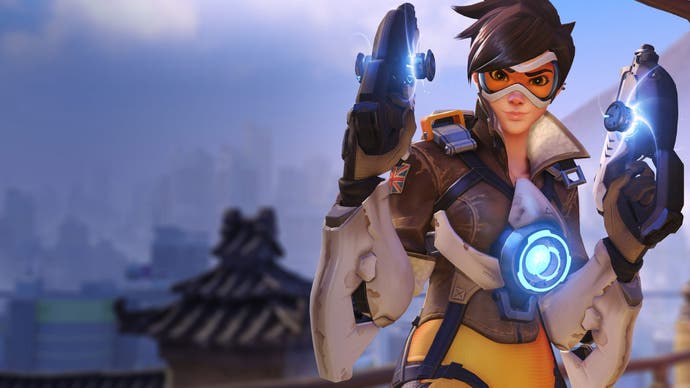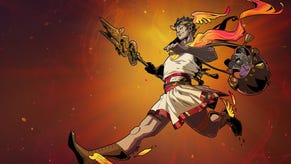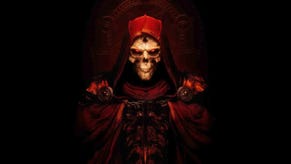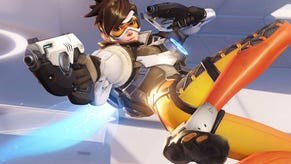How Blizzard created the Overwatch fandom - and how the fandom left Blizzard behind
Emily is away.
If you want to know the difference between an Overwatch fan and a member of the Overwatch fandom, ask them which characters are LGBTQ+.
Attentive fans will likely know that Tracer has a girlfriend, Emily, based on a dialogue line she has on a single map and a comic released separately from the game. It's less likely, but possible, that they will have seen the Tweet from lead writer Michael Chu and know she was confirmed to be a lesbian specifically.
Ask a member of the fandom and they'll probably have a list. Pharah and Mercy are usually dating, as are Hanzo and McCree. They might eschew Emily to imagine Tracer in a relationship with any of the other women in the game, though usually Widowmaker. Lúcio, Junkrat, McCree, Genji, and D.Va are all commonly imagined to be transgender.
None of this comes from Blizzard, of course. Instead, the fandom's enjoyment of the game is deeply creative, taking the foundations that Blizzard made and building on them. Fanfiction imagines characters falling in love on the battlefield or in alternate universes. Art depicts them kissing, holding pride flags, or with top surgery scars - sometimes all three at once. Most of these creators also play the game, but not everyone is interested in the first-person shooter itself; instead they are simply invested in the characters - or others' interpretations of them.
At first glance, Overwatch might seem like a strange foundation for this kind of devoted creativity. In-game, the heroes really only differ mechanically, and they interact almost entirely by trying to kill each other. There are hints of backstories and relationships in bios and pre-match interactions, but these are easily ignored by those who are disinterested.
Yet for those who care, they can be spun into a tapestry that goes far beyond the slow progressing lore doled out by Blizzard. In fact, one of Overwatch's key strengths when it comes to building a fandom is that its characters are rough sketches, ready to be filled in with details from the imagination of fans.
Lots of franchises fit that bill, but few had Overwatch's level of initial hype. New Blizzard IPs come with a pre-existing base of dedicated fans, and the game was announced years before its release, meaning these fans had little to do but imagine. This initial burst of energy easily snowballed.
And, crucially, fandoms tend to lean female and queer; something that can be seen everywhere from the women who loved Star Trek and gave the term its modern meaning, to today's vibrant Tumblr communities. Blizzard courted them by promising inclusivity: "we wanted to create a world where everyone was welcome," explained Overwatch's lead designer Jeff Kaplan. It seems like it was an effective marketing strategy - twice as many women play Overwatch as the genre average.
Ultimately, Blizzard has struggled to truly live up to this promise. Many of Overwatch's characters of colour - for example Symmetra and Doomfist - have been criticised as poorly researched and stereotypical. The game has no servers in Africa, and therefore no African teams in their esports competitions. Though Blizzard claimed to be "really cognisant of...not oversexualising the female characters," many of the women still wear revealing outfits and all (bar Orisa, a robot) have similar silhouettes and even facial structure, so as not to fall outside of the narrow idea of conventional attractiveness. (This is not a problem that the male characters face, as evidenced by the bodily differences of Torbjörn, Reinhardt, and Roadhog.) In the latest lore comic, Retribution, not a single woman speaks. Game after game is marred by (often bigoted) toxicity.
But the developer's efforts do clear the low bar of expectations set by other games and wider media. Fans, starved of representation and diversity, took what they were given and ran with it - leaving Blizzard behind in the process.
As previously illustrated, this can most clearly be seen when it comes to sexuality. Because of heteronormativity, people tend to be considered "straight until proven otherwise," and nothing was said on the topic until months after Overwatch was released, leaving a conspicuous hole in the game's attempts at inclusivity. Eventually, Chu stated that "there are definitely LGBT heroes in Overwatch. That's multiple heroes," and in December 2016, Blizzard revealed Tracer's girlfriend Emily.
Since then, nothing. Not only have Blizzard revealed no new LGBTQ+ characters, we have learned absolutely nothing about Emily herself. Even Tracer's basic wellbeing has been unknown since she was harmed in Doomfist's origin video from July of last year.
Meanwhile, fans are creating their own content for just about every possible pairing - but mostly the same-gender ones. Of the top ten relationships explored on popular fanfiction site Archive of Our Own, just one (Mercy and Genji) is male-female, and it has just 500 stories posted. By comparison, Mercy and Pharah are together in almost 2000, and the most popular relationship, Hanzo and McCree, has 4,500.
Hundreds of thousands of fans, utterly unconstrained by budgets of course, generate content faster than a single company with limited employees. But the drip-feed of Overwatch's canonical lore has been painstakingly slow, both allowing and fuelling dedicated fans to develop their own interpretations.
But it also benefits Blizzard to hedge their bets. It reaps the kudos for "having" LGBTQ+ heroes (plural) as part of its inclusivity promises without putting in the work or risking the backlash of actually announcing them.
With Tracer, the idea of appealing to queer fans and allies won through. And it was an important step - having a lesbian as the face of one of the biggest games and esports is no small thing. But it was the fandom that helped to create the environment that pushed Overwatch from a game with nebulous promises of queerness to one with some real representation. Blizzard predicted that marketing its game as inclusive would net more players, and it likely did, but it wasn't until months after launch that it determined that explicitly including a gay woman would be worthwhile.
And yet, apparently, it hasn't been a priority since. Perhaps that's because the fandom is already established and unlikely to lose steam; Overwatch was the most talked about franchise of any kind on Tumblr in the game's first year. In other words, fans don't need new announcements to continue imagining their own representation. And Blizzard need not take any risk of losing homophobic (or otherwise bigoted) customers if invested ones will do the work unofficially within their own communities.
And they will. Hooked in by promises of diversity and intriguing sketches of characters, fans developed, and continue to generate, a vivid extrapolation. There is no incentive for Blizzard to keep up with them, and neither could it even if it wanted to - because the very act of fandom is to create.











